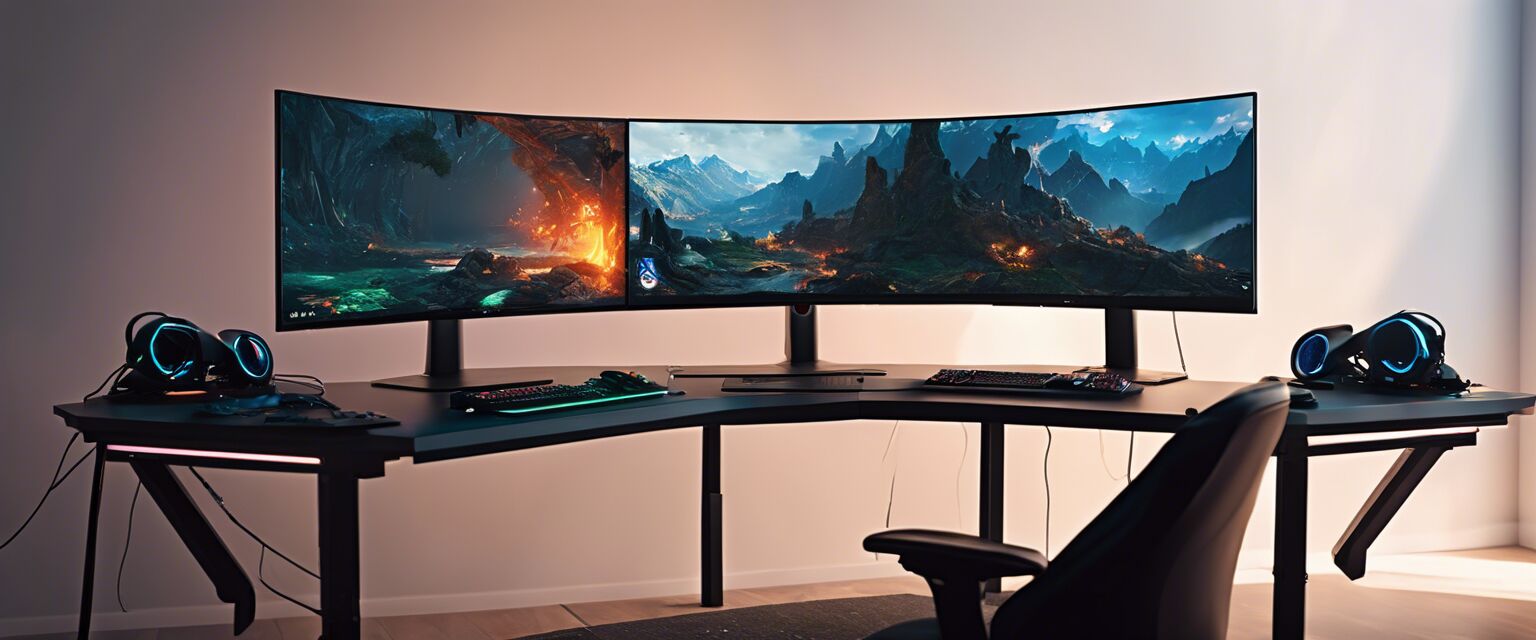
How to Choose between Curved and Ultra-Wide OLED Gaming Monitors
Key Takeaways
- Curved monitors provide an immersive viewing experience.
- Ultra-wide monitors offer a wider field of view without needing multiple screens.
- Consider your gaming space and preferences before making a choice.
- Both options enhance gaming experience, but suit different needs.
- Look for features like refresh rate and response time in addition to design.
Gaming has evolved significantly over the years, with OLED monitors becoming increasingly popular among gamers for their vibrant colors and deep contrasts. This guide will help you choose between curved and ultra-wide OLED gaming monitors based on design, space, and your visual preferences.
Understanding OLED technology
Before delving into the specifics of curved and ultra-wide monitors, it's essential to understand the advantages of OLED technology:
- **Exceptional color accuracy**: OLED monitors deliver stunning, true-to-life colors.
- **Deep contrast ratios**: They offer impressive blacks and brightness levels, enhancing the gaming experience.
- **Faster response times**: OLED panels provide quick pixel response times, reducing ghosting effects.
Curved OLED Gaming Monitors
Curved monitors are designed to create a more immersive gaming experience. Here are some key features:
- **Enhanced depth perception**: The curvature simulates a panoramic view, enveloping the player.
- **Reduced distortion**: Curving the screen minimizes distortion effects, providing a more uniform viewing experience.
- **Ideal for single-player experiences**: The immersive nature of curved monitors is especially beneficial in narrative-driven games.
Space Considerations
When considering a curved OLED monitor, think about your available space:
- Requires more depth: Curved monitors are deeper than their flat counterparts, requiring adequate desk space.
- Viewing distance: The curvature may necessitate sitting further back for an optimal experience.
Ultra-Wide OLED Gaming Monitors
Ultra-wide monitors are designed to provide an expansive field of view, enabling multi-tasking and an immersive experience. Key features include:
- **Wide aspect ratio**: A common aspect ratio is 21:9, offering more screen real estate for a panoramic view.
- **Multitasking capabilities**: Ideal for using multiple applications simultaneously without the need for multiple displays.
- **Great for competitive gaming**: Providing a wider view of the battlefield, ultra-wide monitors can enhance strategic gameplay.
Space Considerations
When considering an ultra-wide OLED monitor, consider the following:
- **Desk space**: Ultra-wide monitors are wide, requiring ample horizontal space.
- **Ideal viewing distance**: Positioning the monitor correctly is crucial to avoid distortion and ensure you're seeing the entire screen.
Comparison Table
| Feature | Curved OLED Monitors | Ultra-Wide OLED Monitors |
|---|---|---|
| Viewing Experience | Immersive and panoramic | Expansive with multitasking capabilities |
| Space Requirements | Requires depth and specific distance | Needs more horizontal space |
| Best Use Case | Single-player and story-driven games | Competitive gaming and multitasking |
| Cost | Varies widely based on specifications | Generally higher for premium models |
Consider Your Gaming Preferences
Your gaming style is a big factor in deciding between curved and ultra-wide monitors. Here are some questions to ask:
- What types of games do you play most often?
- Do you prefer a more immersive single-player experience or a wider field of view for competitive gaming?
- How much desk space do you have available?
Pros of Curved OLED Monitors
- Enhanced immersion
- Reduced glare and reflections
- Good for single-player story titles
Cons of Curved OLED Monitors
- May distort images when viewed from an angle
- Requires more depth
Pros of Ultra-Wide OLED Monitors
- More screen space for multitasking
- Better for competitive gaming
- Wider field of view
Cons of Ultra-Wide OLED Monitors
- Requires a large desk
- Can be expensive
Final Thoughts
Choosing between a curved and ultra-wide OLED gaming monitor ultimately depends on your gaming preferences, space availability, and the type of games you enjoy. Take the time to evaluate these factors as you dive into your gaming experience. For more information on different types of monitors, check out our detailed guides on curved OLED gaming monitors and ultra-wide OLED gaming monitors.
By understanding the advantages and drawbacks of both monitor types, you can make an informed decision that will enhance your overall gaming experience.